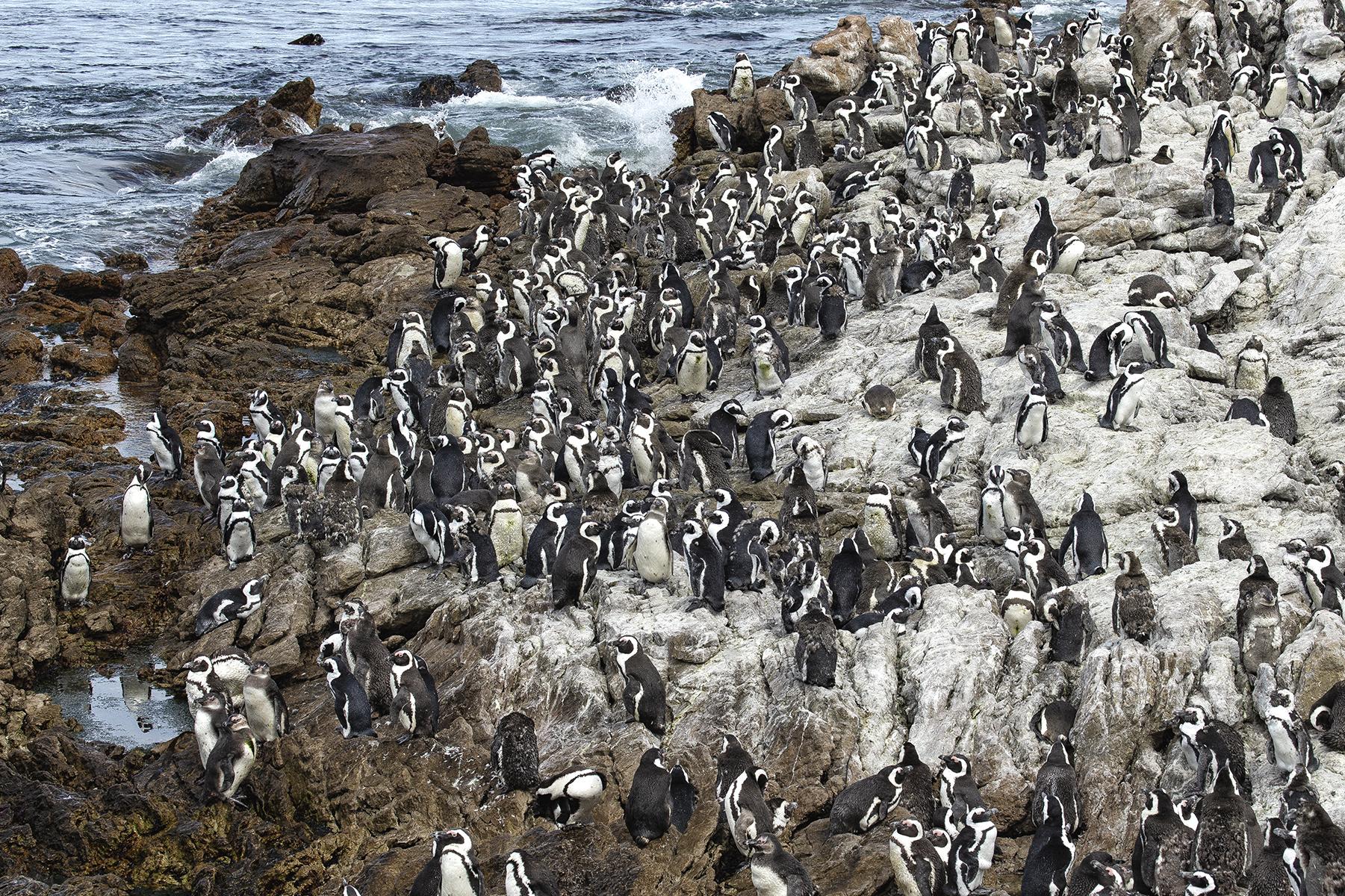
Seabirds (gulls, albatrosses, petrels, alcids, penguins, and others) are entirely dependent on marine habitats for a large part of the year. As a group, they are among the most threatened birds in the world. We say this because just over a quarter (28 percent) of all seabird species are considered globally threatened by the International Union for Conservation of Nature (IUCN), compared to 14 percent of all assessed bird species. Among seabirds, albatrosses are the most threatened, with penguins closely following. Many of these seabird species have common threats, even though they have widely different lifestyles and inhabit distant places on earth.
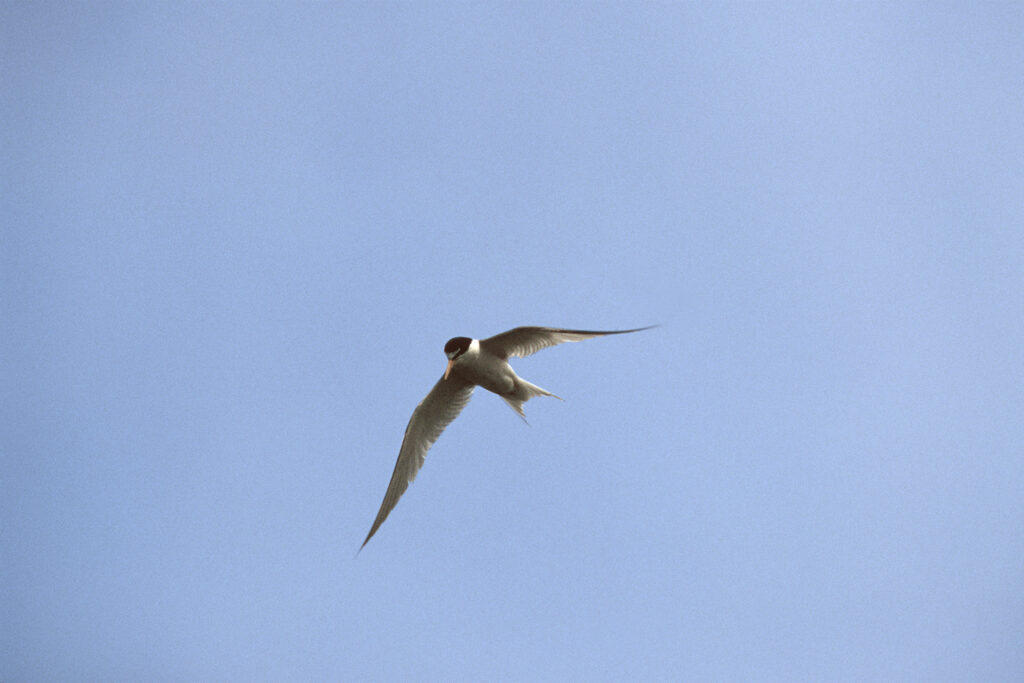
African penguins and California least terns, two example species from our Oceans Conservation Hub, inhabit oceans at opposite corners of the world. Yet they are both listed as endangered under the U.S. Endangered Species Act. The threats they face are similar, and recovery plans for threatened seabirds also have commonalities, making the lessons we learn from recovering our local seabirds applicable in the recovery of threatened seabirds worldwide.
All penguins live in the Southern Hemisphere. Most inhabit temperate oceans and coasts like we have in California. In southern Africa, African penguins Spheniscus demersus live on coastlines and offshore islands. Here, the Benguela current flows northward along the west coast of South Africa and Namibia, where its cold, nutrient-rich water promotes phytoplankton blooms that support large schools of sardines and anchovies, which in turn support African penguins’ high-energy lifestyle.
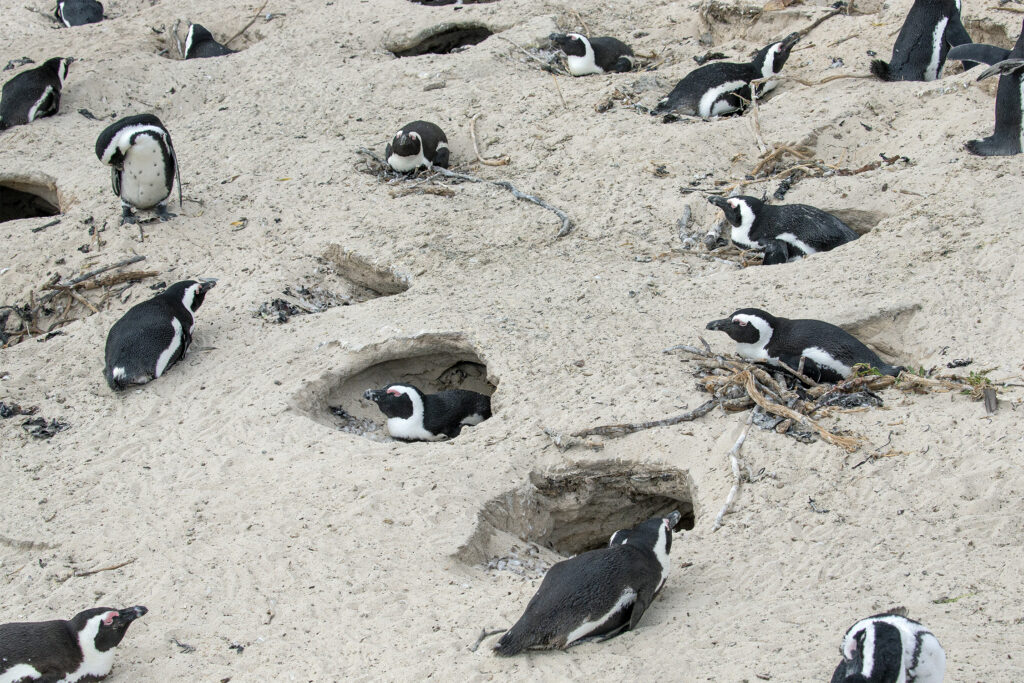
Penguins literally fly underwater. Continuously diving for food requires lots of energy, and penguins need nearby sources of fatty fish to thrive. And because they live in large colonies, spending their days at sea feeding and their nights on shore, their food source not only has to be close, but also plentiful. At the colony, African penguins nest in burrows excavated in layers of guano (nitrogen-rich bird poop) or sandy soil, and on average raise one or more chicks per year. Working with partners, San Diego Zoo Wildlife Alliance supports penguin monitoring and conservation in South Africa, and the McKinney Penguin Habitat at the San Diego Zoo helps build awareness for these endangered seabirds.
Despite being on opposite ends of the Earth, California and South Africa have surprisingly similar coastal and marine environments. Globally, there are only five regions governed by a Mediterranean climate—mild winters and hot, dry summers—and both California and South Africa are among them. Regionally, both the Benguela and California currents are eastern boundary currents. They flow along the eastern side of ocean basins (western coasts of continents), move cold water toward the equator, produce strong nutrient upwelling, and have high productivity. California least terns Sternula antillarum browni migrate to California and Baja California every summer to nest, particularly due to the predictable and abundant food source that the California current can provide. While in California, these endangered birds nest on open and secluded beaches. They lay their eggs—typically two per year—in simple scrapes in the sand.
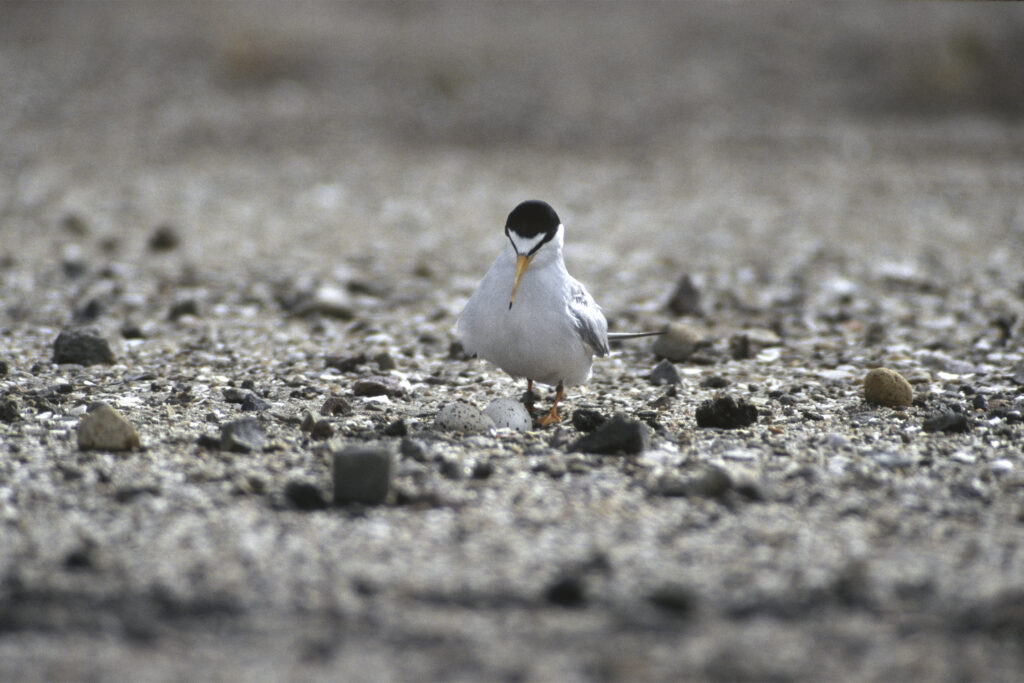
Just like African penguins, California least terns form large nesting colonies that rely on nearby sources of energy-rich fish like anchovies to successfully raise chicks. Every spring and summer, a team of our scientists, in partnership with the U.S. Navy and Marines, monitors two of Southern California’s largest least tern colonies, with the goal of learning what drives reproductive success, so we can best inform least tern recovery.
Besides similar habitats, African penguins and California least terns also share threats that have contributed to their endangered status. One common threat is habitat degradation. Historically, both species were able to use wide open coasts to nest. Because of guano mining for fertilizer, African penguins have lost layers of guano needed to make their nest burrows, leaving them to nest in less insulated and more exposed areas. In California, least terns have lost access to open beaches, having to concentrate their colonies, which nest on only a few remaining closed and secluded beaches.
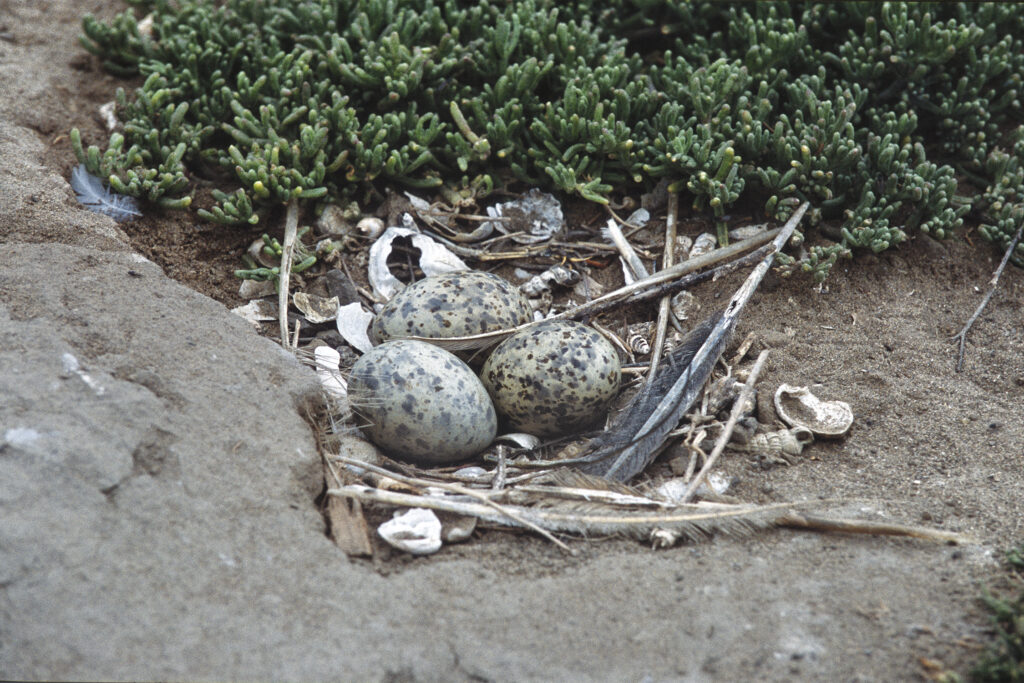
A second threat to both species is introduced or subsidized predators. Introduced predators are those that are not naturally found in the area. Subsidized predators are native, but occur at higher concentrations because urban environments directly or indirectly increase their numbers. Examples of subsidized predators include crows in California and gulls in Africa. Introduced and subsidized predators take adult penguins or terns, as well as their eggs and young.
A third common threat is fish availability, which is likely related to climate change. Climate change may be shifting fish out of reach from nesting parents. Commercial fishing pressures may further reduce prey availability. Both African penguins and California least terns need nearby sources of food to raise their chicks. When their food source is displaced by an El Niño or other climatic variability, penguin and tern parents then must travel farther from their colony to find food. This means parents have to expend more energy to feed their chicks, and leave their nests unattended for longer periods of time. If this happens too often, chicks can starve and/or die from predation or exposure. These and other threats have caused both African penguins and California least tern populations to take big hits. A recent African penguin population census indicates that they are now at less than three percent of their historical numbers. In California, least tern populations have been decreasing for over a decade.
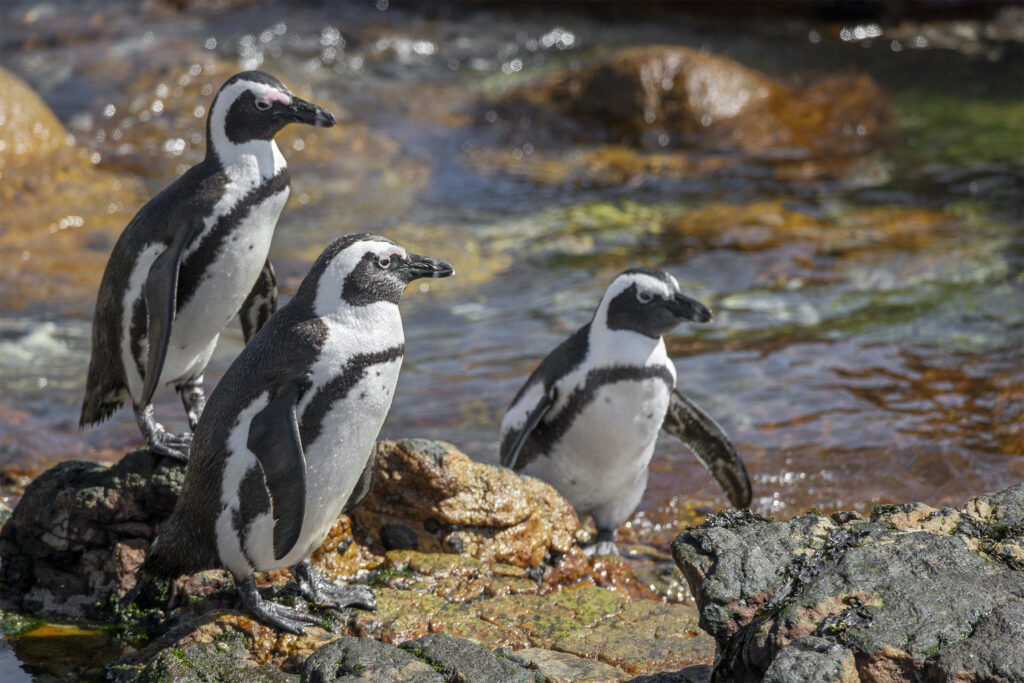
Seabirds are made for the long haul, and we have hope for both these endangered seabirds to recover. As different as they are—one is a 7-pound diving projectile, while the other is a 1.5-ounce flying machine—they have similar life spans and reproductive strategies, living for about 20 to 25 years and raising two chicks per year. That’s a big contrast to most land-based birds, which typically have much shorter life spans and raise more offspring per year. The common house sparrow Passer domesticus, for example, lives only for about three to five years and can fledge eight chicks per year.
This difference is the result of the much tougher lifestyle required to thrive in the ocean than on land, with food being harder to find and fresh water absent. To take advantage of good times, seabirds have evolved long life spans to be able to hold out through periods of poor conditions. The good news is that if we can give African penguins and California least terns a chance to recover, they will. The key is for people to help them mitigate the threats in our changing world.
Discover more about what your support makes possible for seabirds and other vulnerable marine wildlife through our Oceans Conservation Hub.




